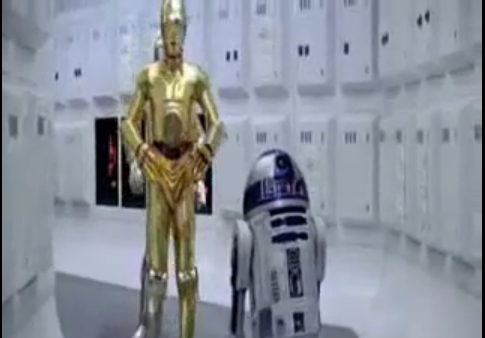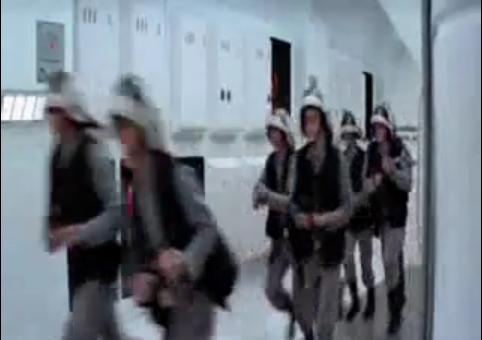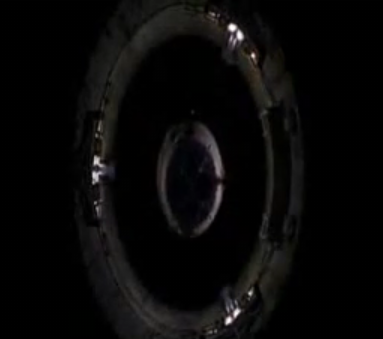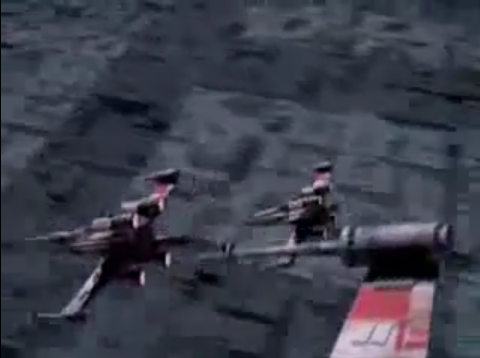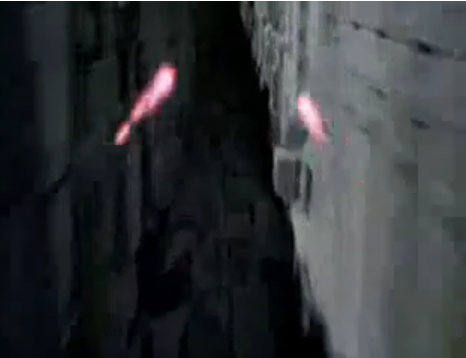1) Who did you work with and how did you manage the task between you?
Group 1E consists of Frank (me), James, Narishma and Olivia. Me and James were the actors in the sequence, while Narishma was the director and Olivia was on camera and sound. Prior to shooting, much of the preparation work was done by Narishma and me. Narishma organised everything and took notes, whilst I was the one who drew the storyboard. James and Olivia pitched in with ideas. During editing, we all did approximately a quarter of editing each, with the others chipping in during the process. In preparation for this evaluation, James created the shot list, Narishma typed up the shooting schedule, Olivia typed up the script and I scanned in the storyboards and checklist.
 |
| From left to right: James, the baby, Olivia, Narishma, Me (Frank) |
We planned our sequence initially by discussing and brainstorming ideas for the plot we wanted in our group, while I drew our planned shots into our storyboard, which consisted of pink post-its on paper. We used the post-its so that we could move around our storyboard in case we changed our minds about the shot order. Then when we finalised our storyboard, I redrew the post its onto a proper storyboard.
Group 1E - Shoot Schedule
Group 1E Script
Group 1E - Shot List
During shooting, we also used a shooting schedule to organise our time accordingly, so that we did all related shots together, for example, all the indoor shots in the same area together so as to save time. Doing this ensured that we finished within the hour we had to shoot the sequence.
We also applied Todorov's theory of equilibrium to our sequence.
Initial Equilibrium -> Disruption -> Disequilibrium -> Final Equilibrium
Man inside alone with baby toy -> Arrival of second guy -> Second guy arrives too late -> First man upset.
 |
| Shot reverse shot and 180 rule |
 |
| Match on action |
3) What technology did you use to complete the task and how did you use it?
 |
| Shooting the outdoor scene with camera and shotgun mic |
 |
| Our editing station |
4) What factors did you have to take into account when planning, shooting and editing?
All in all, we had 3 hours to do this task. 1 to plan, one to shoot and one to edit. In that time, we had to create an entire sequence and edit it to make it flow properly and correctly. So time was one of our biggest problems. Before shooting we had to use our shooting schedule to make sure that we saved as much time as possible so that if anything went wrong, we could redo the shot. We also had to plan ahead for human memory. Originally we were going to use a stuffed bear as the prop instead of the doll, but the person who was meant to bring it in forgot. We had planned beforehand to use the doll instead, so we didn't hit too big a roadblock. In addition, we had planned to have the room in darkness, and then James would turn the light on, but we eventually decided that this would complicate matters and make the editing process much more complicated. It would also mean that we would have to play with the lighting, since the room would have been too dark otherwise, so in the end, we decided to forgo this.
 |
| The offending Media block. From our establishing shot. |
The only factors during editing were time and continuity, which we didn't have much of a problem with, we just got on with it. There was a slight discrepancy when I was turning around, as we had cut between two shots where the 30 degree rule was broken, leading to a slight jump in perspective. We all thought it looked a bit peculiar, but no one could put their finger on it. That was quickly solved by intervention from our teacher. We removed a clip and re-edited it and the end result flowed much better than it did initially.
5) How successful was your sequence? Please identify what worked well and with hindsight, what would you improve/do differently?
I believe that our sequence fulfilled the terms of the brief successfully, as we had several techniques of continuity and completed all the actions to do. We have a match-on-action, a character opening a door, sitting down and having a conversation with another character. We have also followed the 180 and 30 degree rules, ensuring that the audience never loses track of the narrative flow.
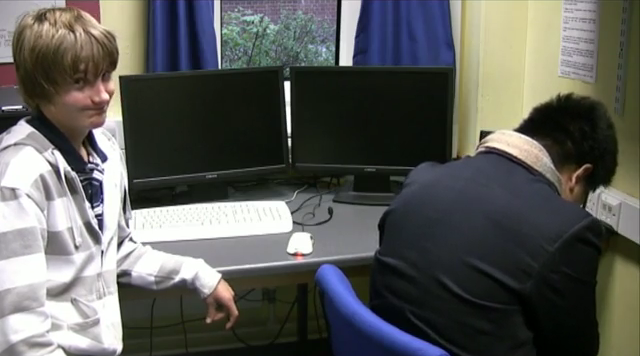 |
| Whoops. We broke the fourth wall |
However, our sequence isn't good either. Given the time to go back and revisit it, we would have done several things differently. Sound is a significant issue. As mentioned before, the sequence was absolutely full of static. If we had time to remove the soundtracks of each clip and record our voices on a professional microphone to remove the static. If a microphone was out of the question, I could have run the sound clip through a filter on Audacity (a music editing program) to remove the static.
 |
| Whoops. |
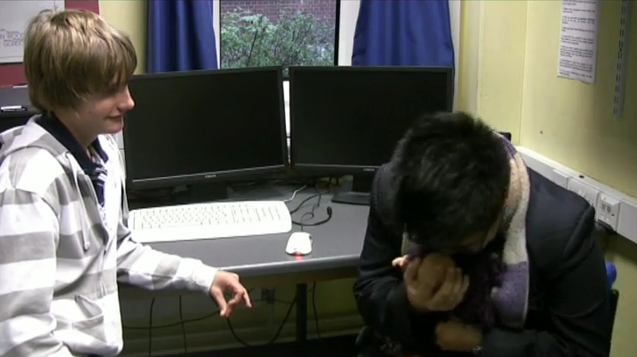 | |||
| We dun goofed |
6) What have you learnt from completing this task? Looking ahead, how will this learning be significant when completing the rest of your foundation coursework, do you think?
By doing this task and successfully completing it, I have learned several new things. I have learned that during the planning, shooting and editing processes, it is always important to plan ahead to prevent potential disasters and also consider continuity, because the loss of continuity means the loss of audience comprehension and understanding and quite possibly interest. We must always apply these continuity rules, lest our sequence be a failure.
Also, I have learned the specific manner in which we must progress prior to filming. We must check sound and camera, only filming when there are no problems with either. In case of a problem, we cannot continue filming, since we would damage either the equipment or the quality of the final sequence.
During this exercise, I have also learned that the key to a sequence is simplicity. Many students will, on their first attempts, try to create the flashiest sequence possible, to show off their talents and skills. Doing so could very well result in a very high quality, entertaining sequence, but most of the time just means more work and more complications. Time is precious during a shoot. It can't be wasted messing around trying to get the perfect shot angle, or getting that one object to fall exactly right. By keeping it simple, we reduce the time needed for each shot, we reduce the strain on resources and we make our jobs much much easier. Simplicity also helps in the planning stages, as the simpler the ideas, the more you can brainstorm during the initial phase, meaning you have more options to try out, so if one idea turns out to be a dead end, you can try another.
Thus, what I have learned will be important to future tasks as it will have helped me with my organisational and planning skills, so that come a significant project, I'll have no problem brainstorming and planning time. All these skills will result in a high quality, entertaining sequence that never breaks continuity.




